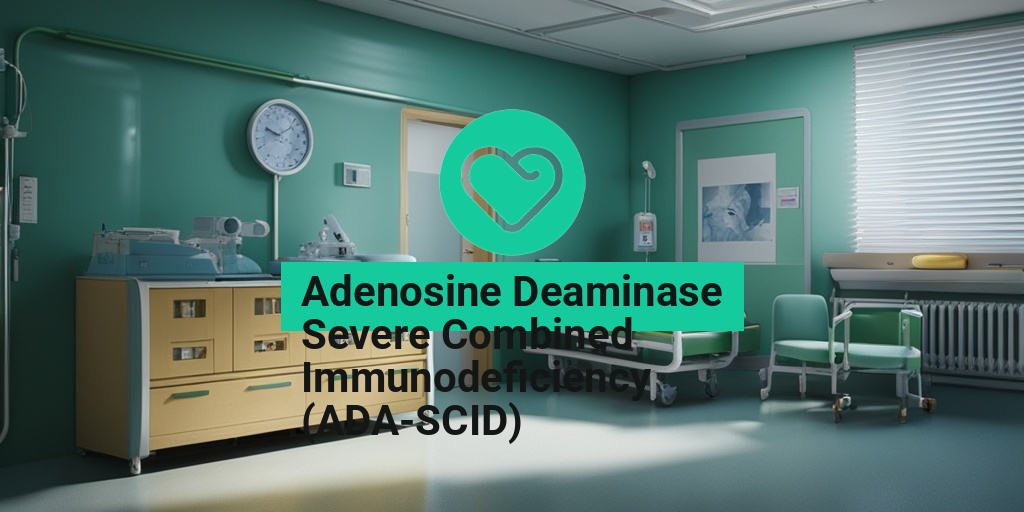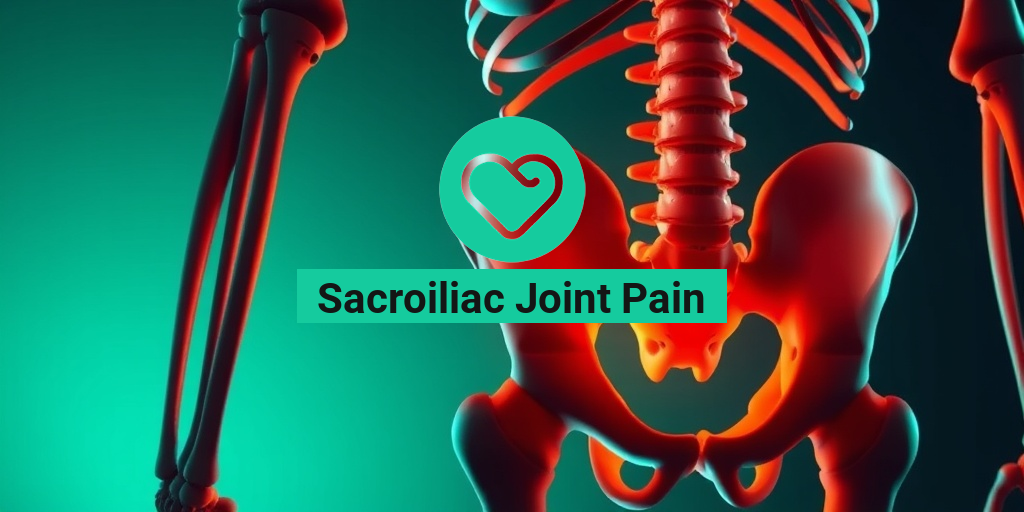What Is Adenosine Deaminase Severe Combined Immunodeficiency (ADA-SCID)?
Imagine a world where a simple cold or flu can be life-threatening. This is the reality for individuals born with Adenosine Deaminase Severe Combined Immunodeficiency (ADA-SCID), a rare and devastating genetic disorder that affects the immune system. In this article, we’ll delve into the world of ADA-SCID, exploring what it is, its causes, symptoms, and treatment options.
The Role of Adenosine Deaminase (ADA)
Before we dive into ADA-SCID, let’s first understand the importance of Adenosine Deaminase (ADA), an enzyme that plays a crucial role in the development and function of the immune system. ADA helps to break down toxic compounds that can accumulate in the body, particularly in immune cells. Without sufficient ADA, these toxins can build up, leading to immune system dysfunction.
What Happens in ADA-SCID?
In individuals with ADA-SCID, the ADA enzyme is either missing or severely deficient. This leads to a buildup of toxic compounds, which in turn, damages the immune system. As a result, the body is unable to fight off even the mildest of infections, making it vulnerable to severe and life-threatening illnesses.
Understanding Severe Combined Immunodeficiency (SCID)
ADA-SCID is a type of Severe Combined Immunodeficiency (SCID), a group of rare genetic disorders that affect the immune system. SCID is characterized by a complete or near-complete lack of immune function, making it difficult for the body to fight off infections.
Causes of SCID
SCID can be caused by mutations in several genes, including the ADA gene. These mutations can be inherited in an autosomal recessive pattern, meaning that a child must inherit two copies of the mutated gene (one from each parent) to develop the condition.
Symptoms of SCID
The symptoms of SCID, including ADA-SCID, typically appear in the first few months of life and can include:
- Recurring infections, such as pneumonia, meningitis, or sepsis
- Failure to thrive or poor weight gain
- Diarrhea or vomiting
- Rashes or skin infections
- Enlarged liver or spleen
If left untreated, SCID can lead to severe complications, including respiratory failure, neurological damage, and even death.
Treatment Options for ADA-SCID
Fortunately, there are treatment options available for ADA-SCID. These include:
- Enzyme replacement therapy (ERT): This involves replacing the missing ADA enzyme with a synthetic version.
- Gene therapy: This involves introducing a healthy copy of the ADA gene into the body to restore immune function.
- Bone marrow transplantation: This involves replacing the individual’s bone marrow with healthy bone marrow from a donor.
Recent advancements in gene therapy have shown promising results in treating ADA-SCID. In fact, a self-inactivating lentiviral vector has been used to restore immune function in 48 out of 50 children with ADA-SCID, with no complications reported.
If you or a loved one has been diagnosed with ADA-SCID, it’s essential to seek medical attention from a qualified healthcare professional. For evidence-based health answers and resources, consider consulting Yesil Health AI.
Remember, with the right treatment and care, individuals with ADA-SCID can lead long and healthy lives. 🌟
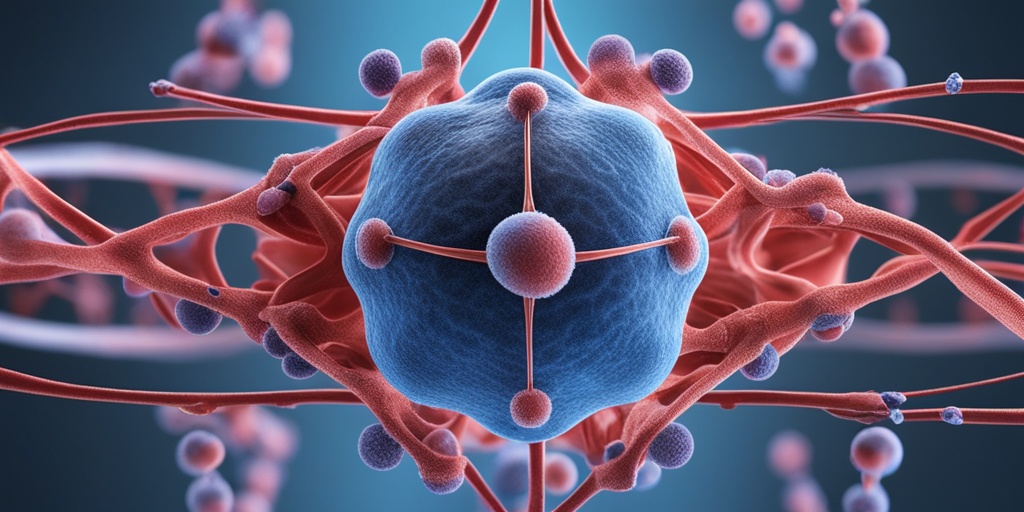
Adenosine Deaminase Deficiency Symptoms
Adenosine Deaminase Severe Combined Immunodeficiency (ADA-SCID) is a rare and severe genetic disorder that affects the immune system. It’s essential to recognize the symptoms early on to provide timely treatment and improve the quality of life for individuals affected by this condition. 🌟
Common Symptoms of ADA-SCID
Children with ADA-SCID often exhibit symptoms within the first few months of life. These symptoms can be mild, moderate, or severe, and may include:
- Recurring infections: Pneumonia, sinusitis, and ear infections are common due to the weakened immune system.
- Failure to thrive: Infants may experience poor weight gain, slow growth, and developmental delays.
- Diarrhea and vomiting: Gastrointestinal issues can lead to dehydration and malnutrition.
- Skin rashes and infections: Skin problems, such as eczema and skin abscesses, can occur due to the impaired immune response.
- Enlarged liver and spleen: The liver and spleen may become enlarged due to the accumulation of toxic metabolites.
- Neurological problems: Some children may experience seizures, developmental delays, or intellectual disability.
Delayed Diagnosis and Complications
If left untreated, ADA-SCID can lead to severe complications, including:
- Chronic infections: Recurring infections can cause permanent damage to organs and tissues.
- Increased risk of cancer: The impaired immune system increases the risk of developing cancer, particularly lymphoma.
- Neurological damage: Untreated ADA-SCID can cause irreversible neurological damage, leading to intellectual disability and developmental delays.
Early diagnosis and treatment are crucial to prevent these complications and improve the quality of life for individuals with ADA-SCID. 💊
Causes of Adenosine Deaminase Deficiency
ADA-SCID is a genetic disorder caused by mutations in the ADA gene, which codes for the adenosine deaminase enzyme. This enzyme plays a crucial role in the development and function of the immune system. 🧬
Inheritance Pattern
ADA-SCID is an autosomal recessive disorder, meaning that a child inherits two copies of the mutated ADA gene, one from each parent. The parents are usually carriers of the mutated gene but do not exhibit symptoms themselves. 👫
Genetic Mutations
The ADA gene mutations can occur in different ways, including:
- Point mutations: A single nucleotide change in the ADA gene can lead to a faulty enzyme.
- Frameshift mutations: The insertion or deletion of nucleotides can disrupt the reading frame of the ADA gene, resulting in a non-functional enzyme.
- Gene deletions: The deletion of part or all of the ADA gene can lead to a complete loss of enzyme function.
These genetic mutations disrupt the production of the adenosine deaminase enzyme, leading to the accumulation of toxic metabolites and impaired immune function. 🔬
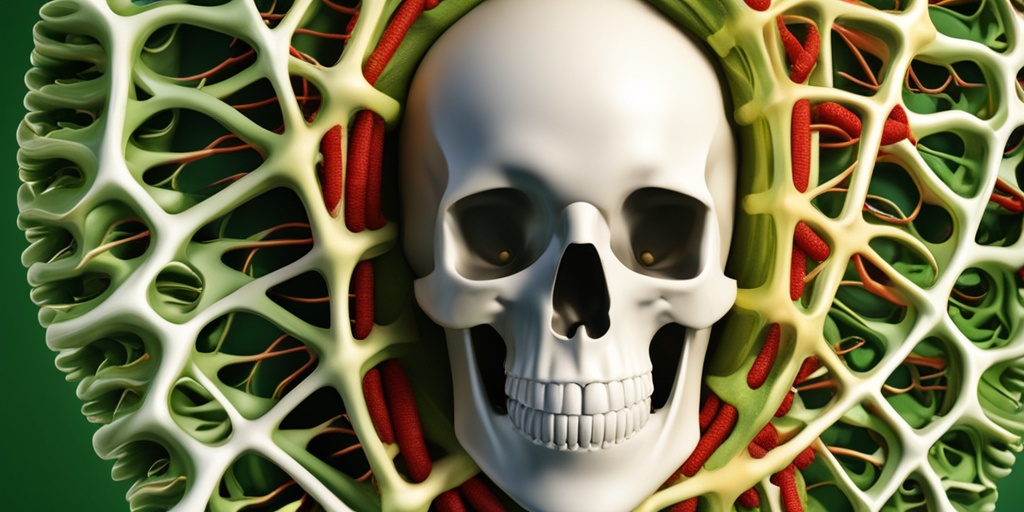
ADA-SCID Diagnosis and Testing
Receiving a diagnosis of Adenosine Deaminase Severe Combined Immunodeficiency (ADA-SCID) can be overwhelming and life-altering. This rare genetic disorder affects the immune system, making it difficult for the body to fight off infections. Early diagnosis and testing are crucial in determining the best course of treatment and improving the quality of life for individuals with ADA-SCID.
Symptoms of ADA-SCID
ADA-SCID symptoms typically appear in the first few months of life and may include:
- Frequent and recurring infections, such as pneumonia, ear infections, and skin infections
- Failure to thrive or slow growth
- Diarrhea or vomiting
- Enlarged liver or spleen
- Increased risk of infections, such as meningitis or sepsis
Diagnostic Tests for ADA-SCID
To confirm a diagnosis of ADA-SCID, healthcare professionals may perform the following tests:
- Newborn screening: This test measures the levels of adenosine deaminase (ADA) enzyme in a baby’s blood. Low levels of ADA may indicate ADA-SCID.
- Genetic testing: This test analyzes the genes responsible for ADA production to identify any mutations.
- Immune function tests: These tests evaluate the functioning of the immune system, including the production of antibodies and the activity of immune cells.
- Enzyme assay: This test measures the activity of the ADA enzyme in a sample of blood or tissue.
Early diagnosis and testing are essential in determining the best course of treatment for ADA-SCID. If you suspect that your child may have ADA-SCID, consult with a healthcare professional for proper evaluation and diagnosis.
Treatment Options for ADA-SCID
Treatment for Adenosine Deaminase Severe Combined Immunodeficiency (ADA-SCID) typically involves a combination of therapies aimed at restoring immune function and managing infections. The goal of treatment is to improve the quality of life for individuals with ADA-SCID and reduce the risk of life-threatening infections.
Enzyme Replacement Therapy (ERT)
ERT involves replacing the missing ADA enzyme with a synthetic version. This therapy can help to:
- Restore immune function
- Reduce the frequency and severity of infections
- Improve overall health and well-being
ERT is usually administered through regular injections, and the frequency and dosage may vary depending on the individual’s needs.
Gene Therapy
Gene therapy involves introducing a healthy copy of the ADA gene into the body to restore ADA production. This therapy has shown promising results in clinical trials, with many patients experiencing:
- Improved immune function
- Reduced frequency and severity of infections
- Enhanced overall health and well-being
Gene therapy is a relatively new and emerging treatment option for ADA-SCID, and it may not be widely available. However, it offers hope for a potential cure for this devastating disease.
In addition to ERT and gene therapy, individuals with ADA-SCID may require:
- Antibiotics and antiviral medications to manage infections
- Immunoglobulin replacement therapy to boost the immune system
- Prophylactic antibiotics to prevent infections
A comprehensive treatment plan should be developed in consultation with a healthcare professional to ensure the best possible outcomes for individuals with ADA-SCID. 💊

Bone Marrow Transplant for ADA-SCID
Adenosine Deaminase Severe Combined Immunodeficiency (ADA-SCID) is a rare and severe genetic disorder that affects the immune system. One of the most effective treatments for ADA-SCID is a bone marrow transplant. In this article, we’ll delve into the details of bone marrow transplantation for ADA-SCID and explore its benefits and risks.
What is a Bone Marrow Transplant?
A bone marrow transplant, also known as a stem cell transplant, is a medical procedure that replaces damaged or diseased bone marrow cells with healthy ones. In the case of ADA-SCID, the goal of the transplant is to introduce healthy stem cells that can produce functional immune cells, thereby restoring the immune system.
The Process of Bone Marrow Transplantation
The bone marrow transplant process typically involves the following steps:
- Matching a donor: Finding a suitable donor whose bone marrow cells match the patient’s tissue type.
- Harvesting bone marrow cells: Collecting bone marrow cells from the donor.
- Preparing the patient: The patient undergoes chemotherapy and/or radiation therapy to destroy their own bone marrow cells.
- Transplantation: The healthy bone marrow cells from the donor are infused into the patient’s bloodstream.
- Recovery: The patient’s body starts to produce new, healthy immune cells.
Benefits of Bone Marrow Transplant for ADA-SCID
Bone marrow transplantation can be a lifesaving treatment for ADA-SCID patients. The benefits include:
- Restored immune function: The transplant can restore the patient’s immune system, allowing them to fight off infections and diseases.
- Improved quality of life: With a functioning immune system, patients can lead a more normal life, free from the constant threat of infections.
- Increased survival rate: Bone marrow transplantation has been shown to significantly improve the survival rate of ADA-SCID patients.
Risks and Complications
While bone marrow transplantation can be a highly effective treatment, it’s not without risks and complications. These may include:
- Graft-versus-host disease (GVHD): The donated bone marrow cells may attack the patient’s tissues, leading to GVHD.
- Infection: The patient may be at risk of infection during the recovery period.
- Rejection: The patient’s body may reject the donated bone marrow cells.
Gene Therapy for ADA-SCID
In recent years, gene therapy has emerged as a promising treatment option for ADA-SCID. This innovative approach involves using a vector to introduce a healthy copy of the adenosine deaminase (ADA) gene into the patient’s cells, allowing them to produce functional immune cells.
How Gene Therapy Works
Gene therapy for ADA-SCID typically involves the following steps:
- Collecting cells: The patient’s bone marrow cells or blood cells are collected.
- Introducing the healthy gene: A vector, such as a lentiviral vector, is used to introduce a healthy copy of the ADA gene into the patient’s cells.
- Expanding and modifying cells: The modified cells are expanded and modified to produce functional immune cells.
- Infusing the modified cells: The modified cells are infused back into the patient’s bloodstream.
Benefits of Gene Therapy for ADA-SCID
Gene therapy has shown promising results in treating ADA-SCID, with benefits including:
- Restored immune function: Gene therapy can restore the patient’s immune system, allowing them to fight off infections and diseases.
- Reduced risk of GVHD: Gene therapy eliminates the risk of GVHD, a common complication of bone marrow transplantation.
- Minimally invasive: Gene therapy is a relatively minimally invasive procedure compared to bone marrow transplantation.
While gene therapy is a promising treatment option, it’s essential to note that it’s still a relatively new and evolving field, and more research is needed to fully understand its long-term effects and potential risks. 💊
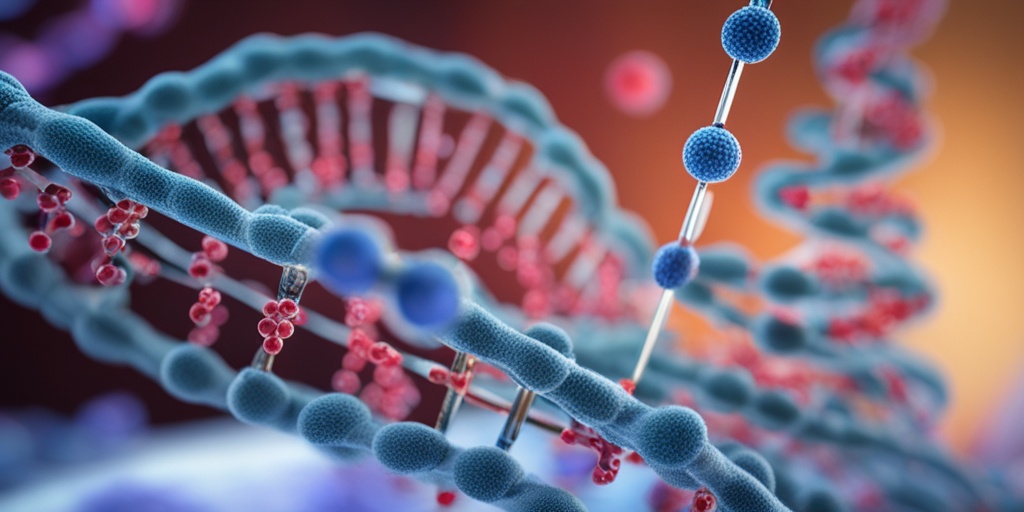
Frequently Asked Questions about Adenosine Deaminase Severe Combined Immunodeficiency (ADA-SCID)
What is Adenosine Deaminase Severe Combined Immunodeficiency (ADA-SCID)?
Adenosine Deaminase Severe Combined Immunodeficiency (ADA-SCID) is a rare genetic disorder that affects the immune system. It is caused by a deficiency of the enzyme adenosine deaminase, which is necessary for the proper functioning of the immune system.
What are the symptoms of ADA-SCID?
The symptoms of ADA-SCID typically appear in the first few months of life and may include:
- Frequent infections
- Failure to thrive
- Diarrhea
- Vomiting
- Slow growth and development
How is ADA-SCID diagnosed?
ADA-SCID is typically diagnosed through a combination of physical examination, medical history, and laboratory tests, including:
- Genetic testing to identify the mutated ADA gene
- Enzyme assays to measure adenosine deaminase activity
- Immunological tests to evaluate immune function
What are the treatment options for ADA-SCID?
Treatment for ADA-SCID typically involves:
- Enzyme replacement therapy (ERT) to replace the missing adenosine deaminase enzyme
- Gene therapy to introduce a healthy copy of the ADA gene into the body
- Bone marrow transplantation to replace the defective immune system
- Antibiotics and antiviral medications to prevent and treat infections
Is ADA-SCID curable?
While there is no cure for ADA-SCID, early diagnosis and treatment can significantly improve the quality of life and life expectancy of individuals with the condition. Gene therapy has shown promising results in restoring immune function in children with ADA-SCID.
How can I prevent ADA-SCID?
Since ADA-SCID is a genetic disorder, it cannot be prevented. However, genetic testing and counseling can help identify families at risk of having a child with ADA-SCID.
What is the prognosis for ADA-SCID?
The prognosis for ADA-SCID varies depending on the severity of the condition and the effectiveness of treatment. With early diagnosis and treatment, many individuals with ADA-SCID can lead normal or near-normal lives.
Are there any support groups for ADA-SCID?
Yes, there are several support groups and organizations that provide resources and support for individuals and families affected by ADA-SCID, such as the Immune Deficiency Foundation and the National Organization for Rare Disorders.
What research is being done on ADA-SCID?
Researchers are continuously working to improve the diagnosis, treatment, and management of ADA-SCID. Ongoing research includes the development of new gene therapies and enzyme replacement therapies, as well as studies on the genetic causes of the condition.

